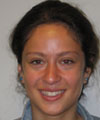

 Vascular-ventricular coupling (VVC) is an important, yet understudied, measure of the interaction between the heart and systemic vasculature, and provides valuable insight into cardiovascular disease risk. The VVC ratio, composed of arterial elastance (Ea) and left ventricular elastance (EES), represents a measure of mechanical efficiency1. Significant changes in VVC are known to occur with age and exercise, with differences exhibited between males and females2. Moreover, the benefits of habitual exercise on VVC and related health outcomes have not been investigated. Given that post-menopausal women are at significant risk of developing cardiovascular disease involving both cardiac and vascular components3, it is important to identify potential sex differences in the cardiovascular response to training.
Vascular-ventricular coupling (VVC) is an important, yet understudied, measure of the interaction between the heart and systemic vasculature, and provides valuable insight into cardiovascular disease risk. The VVC ratio, composed of arterial elastance (Ea) and left ventricular elastance (EES), represents a measure of mechanical efficiency1. Significant changes in VVC are known to occur with age and exercise, with differences exhibited between males and females2. Moreover, the benefits of habitual exercise on VVC and related health outcomes have not been investigated. Given that post-menopausal women are at significant risk of developing cardiovascular disease involving both cardiac and vascular components3, it is important to identify potential sex differences in the cardiovascular response to training.
A cohort of young sedentary males and females, and middle-aged endurance trained males and females will be recruited. Measures of vascular and cardiac function will be taken using 2-D ultrasound, tonometry and 4-D echocardiography to calculate the VVC ratio. Comparisons will be made between cohorts at rest, and during exercise.
This research has the potential to further our understanding of the relationship between age and sex on fitness related differences in cardiovascular performance and components of the cardiovascular system most vulnerable to age- and disease-related derangements. This may assist in optimizing exercise prescription in women- and closely aligns with the objective of the Lorne Phenix graduate award in its pursuit of improving cardiovascular health in a vulnerable population.
1. Canterin-Antonini F, Poli S, Vriz O, Pavan D, Di Bello V, Nicolosi G. The ventricular-arterial coupling: from basic pathophysiology to clinical application in the echocardiography laboratory. Jour Cardiovasc Echocardio. 2013, 23(4): 91-95.
2. Najjar S, Schulman S, Gerstenblith G, Fleg J, Kass D, O’Connor F, Becker L, Lakatta E. Age and gender affect ventricular-vascular coupling during aerobic exercise. Jour American Coll Cardiol. 2004, 44(3): 611-617.
3. Yang X and Reckelhoff J. Estrogen, hormonal replacement therapy and cardiovascular disease. Curr Opin Nephrol Hypertens. 2011, 20(2): 133-138.